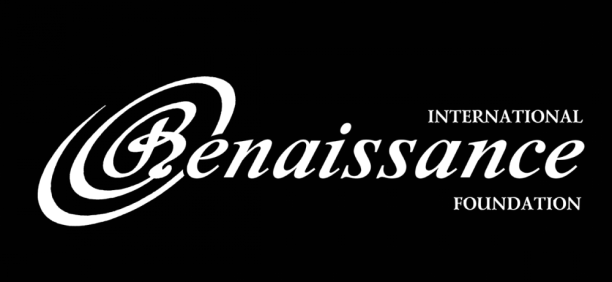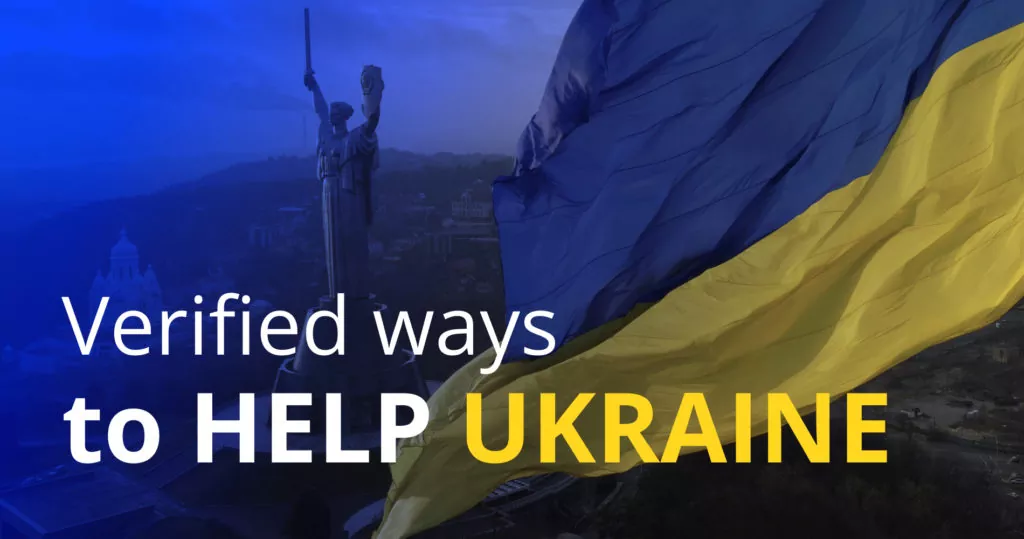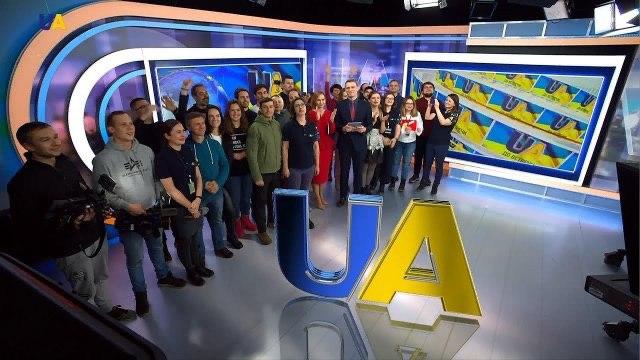Back on 1 October 2015, Ukraine launched the international TV channel UATV. It started broadcasting in Ukrainian, Russian, English, Arab, and Crimean Tatar languages and intended to become the voice of Ukraine in the world. The channel lacked resources to be as loud as the voices of Russian propaganda, however, it became an alternative to the Kremlin’s false narratives about Ukraine. UATV was developing and growing until the end of 2019, when the Ukrainian government suddenly decided to replace it with an entertainment channel in Russian and Ukrainian targeting the audience of Russia-occupied occupied territories of Ukraine. Russia has already started making use of the situation.
Ukraine’s international broadcaster ceased production of news and its broadcast satellite service on 13 January 2020. Euromaidan Press has talked to Olena Khomenko, Head of the Department of Translators and Editors of the English Broadcasting Office about the channel and its upcoming transformations.
The unexpected news on shutting down their channel hit hard the UATV team, and, in fact, they were not told straight that the channel was about to shut down.
“On 29 December we had a general meeting in our newsroom. Our then-manager, CEO, editor-in-chief announced that they wrote resignation letters, and that starting from the New Year we would work under the new management team and that some changes were possible. And that was it,” Khomenko says.
The next meeting – now under the new management – took place on 3 January 2020.
“No one said the word ‘to shut down.’ We were told that the channel will be reformatted and that first of all it will be entertainment and that it’ll be aired only to the occupied territories, primarily, of the Donbas.”
Khomenko said she asked about the fate of the English-language, Arab, and Crimean Tatar editorial offices. She did not hear any clear answer but was once again told that there will be only Russian and Ukrainian language broadcasting.
The name of the new channel was not announced. However, the team was told that at the beginning Ukrainian media groups will share their entertainment content with the channel for free, later the content might be purchased.
After the information became public, various manipulative statements mentioning the low rating of UATV started to emerge. The manipulation ignored the fact that the ratings of the foreign audience could not be measured that easily. Moreover, according to the corresponding legislation, the TV channel was established for foreign audiences, so it was logical that Ukrainian audience were hardly familiar with UATV.
“Here we emit the signal to a satellite. The satellite broadcasts the signal down to a country. A special research is needed to know who tuned in or didn’t do it. You should purchase special surveys for that. There are rating companies like Nielsen who do such researches. A research in one country is expensive. And for 30 countries it costs as expensive as multiplied by 30. Meanwhile, cable operators simply did not want to reveal their confidential information on their viewership.”
Ukraine’s international channel wasn’t the only facing the issues how to measure its international audience. Khomenko told that their colleagues from Deutsche Welle mentioned the same problem. According to her, UATV had an ambition to become kind of Ukrainian Deutsche Welle or BBC. However, Ukraine’s international broadcasting was just breaking new ground.
“The most important resource ever is time. Turkish international broadcasting exists for 40 years. We existed for four years. So to compare our coverage to theirs would be incorrect, as well as to Deutsche Welle’s or BBC’s. We started four years ago from scratch. No one knew how to do it. No one had even no idea how to approach all the global issues and challenges.”
The ideas to launch Ukraine’s international broadcasting were floated in 2014 after Russia had unleashed its aggression against Ukraine.
Read also: How Estonian Public Broadcasting creates an alternative to Russian propaganda
UATV milestones
Throughout the four years of its existence, the channel has significantly developed from scratch. Khomenko joined it in 2017 and she lists the milestones she had witnessed with UATV:
- The launch of the website of the channel in early 2018 and creating the social media platforms represented in five languages.
- The channel was reformatted and started broadcasting news. The journalists started to do live stand-ups.
- Local news bureaus were opened. At the end of 2019, there were three of them – in Poland, Türkiye, and the US. In 2020, the one in China should have been opened.
“Can you imagine how difficult it was to negotiate with socialist China? How many stones had we not to leave unturned, and how many walls had to be broken to obtain this permission. Nevertheless, we received it,” Khomenko says.
- UATV started to cooperate with the Belt and Road News Alliance video sharing platform, and later with the Asia-Pacific Broadcasting Union. Khomenko adds that the world-renowned news agencies like Reuters, APTN, and Chinese CCTV were taking the scripts from UATV.
- Additionally, UATV produces around 30 own programs. Among them was the show reconstructing Russian aggression in Ukraine day by day, other dealt with diplomatic issues, literature, music, education, aimed at potential investors, etc.
“As of 2014 there were just a few things due to which Ukraine was known in the world. They were Chornobyl, Maidan, sports, in particular Klitschko brothers, and corruption. Our mission was to show that we exist, there is life in Ukraine, we have our culture that is interesting and can be very modern and trendy,” Khomenko adds.
- Ukraine’s international channel was broadcasted via five satellites. One more should have been added in 2020. Also, more cable operators were going to put UATV in their packages this year.
“There was a development in the right direction. Now, all the contracts and agreements on the satellite broadcasting and the contracts with about 400 cable operators had been urgently terminated,” Khomenko explains.
She adds that even if in a few months or years Ukraine would re-establish the broadcasting from scratch again, Ukraine will already be portrayed in the worst light as an unreliable partner.
Who would tell about Ukraine to the world instead of Ukraine
Rusian government-funded international TV network RT formerly known as Russia Today is probably world’s loudest voice that regularly mentions Ukraine. Russia spends huge budgets on its propaganda for domestic and international audiences. The funding is barely comparable to UATV’s.
“We couldn’t afford being “the first button” on the set in every hotel. It costs money. And this was the money of the Ukrainian taxpayers. It would be naive to expect such a coverage [as RT has] just because we tell the truth,” Khomenko explains.
Meanwhile, in the wake of the news on the “reformatting” of UATV, Russia has already started capitalizing on new opportunities: the Russian channel RTVi banned in Ukraine since March 2019 is already available at the frequencies previously used by UATV on the Asiasat-5 satellite.
“Of course, the UATV audience would not watch Russia’s Perviy Kanal [First Channel] or RTR Planet. However, semi-pro-Russian channel may achieve the goal. This is pure Goebbelsism, 60/40 [of truth/lie] The hybrid war foresees hybrid instruments to achieve the goal,” Oleksandr Hlushchenko, National TV and Radio Broadcasting Council member says.
The expert adds that Russia uses Ukraine’s failures immediately to gain its aims.
Khomenko elaborates that UATV’s only strategy in fighting Russian propaganda was calling a spade a spade, Russia an aggressor.
“We did not have special messages like to fight fire with fire, to fight propaganda with propaganda. The only way to fight propaganda is telling the truth.”
Some attempts have been made to reverse the decision on canceling the international broadcasting.
A petition has been registered on the presidential site calling to resume full operation of UATV in English, Arabic, Russian, Crimean Tatar, and Ukrainian via satellites, cable networks, and social networks. Only Ukrainian citizens can vote for it. To be considered the petition should reach 25,000 votes.
Another petition with voting open to anyone emerged on Change.org.
Meanwhile at the moment of publication of this article, the government has not contacted the UATV team,
“The Minister of Culture, Youth and Sports gave many interviews to different media. However, he did not come to tell us their vision of the new channel, its future,” Khomenko says.
400 people worked full-day on UATV. In particular, the English language editorial office employed 36 people, including 12 foreigners.
According to Khomenko, it was way too complicated to gather the team of native speakers. For example, when one presenter decided to leave, it took about a half-year to find a substitute.
“We found Kari Odermann from Michigan who has Ph.D. in political science. Thanks to her, CNN started writing about us.”
Khomenko continues her story saying that in July 2019 Odermann interviewed Gordon Sondland, United States Ambassador to the European Union. When in fall Trump-Ukraine scandal hit the headlines, the interview was found and quoted by the world media such as CNN, New York Times, the Washington Post, and others. In the interview, the Ambassador said that he had received directions from Donald Trump to oversee Ukraine.
“A person just said something and then this something turned out to be a thing that could lead to the dismissal of the US President. I mean that the number of views is the number of views, but the influence is the influence.”
Khomenko says that the team was officially informed that everyone who wants can try themselves as presenters on the new channel. However, it would hardly work for the foreign employees, who can’t speak Ukrainian or Russian well. Moreover, under Ukrainian laws the residence permit for foreigners is related to the work permit. In effect, those who lose their jobs have seven days to leave the country if they don’t meet any other criteria to stay in the country.




